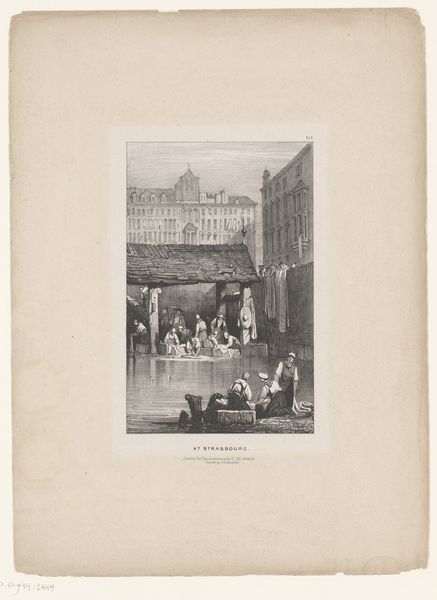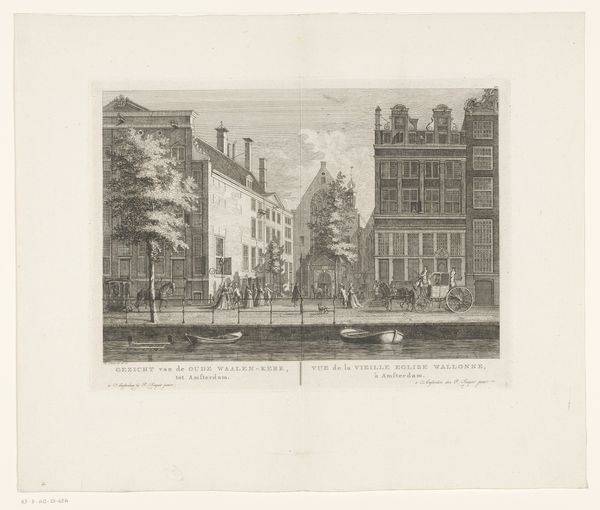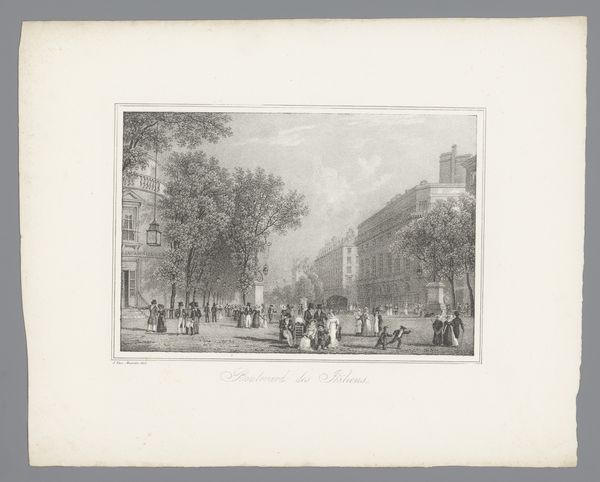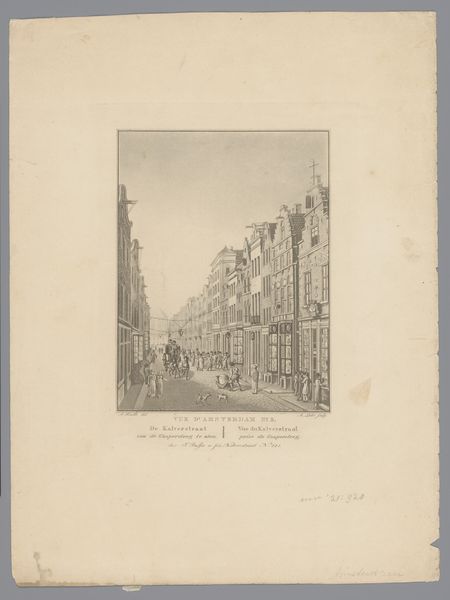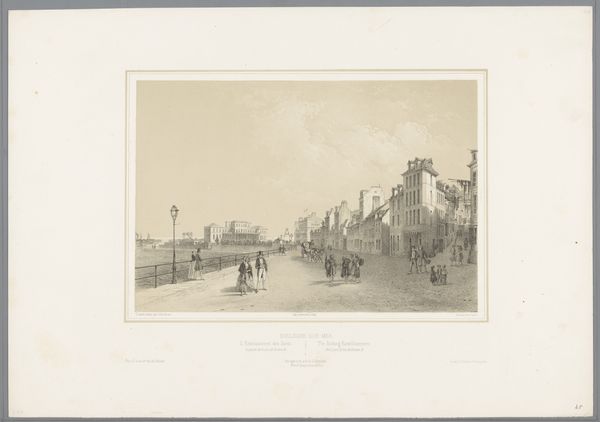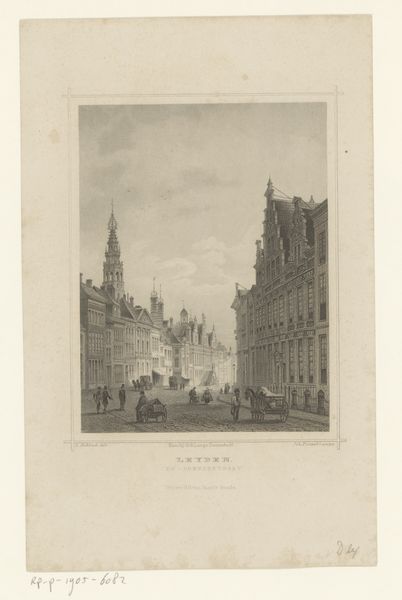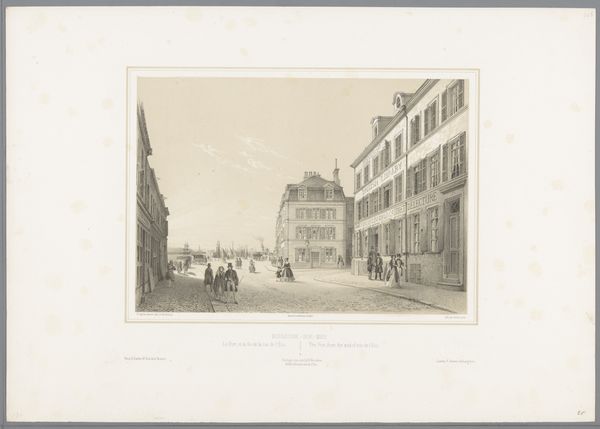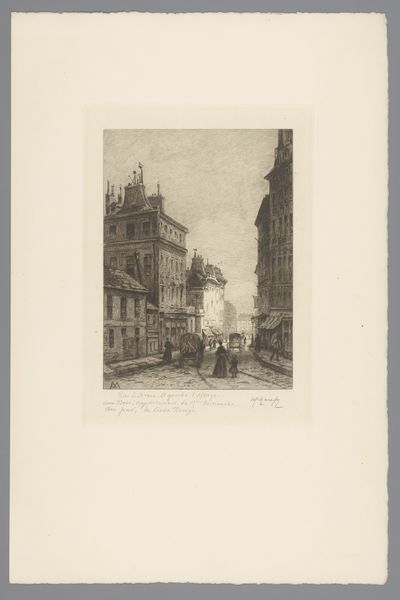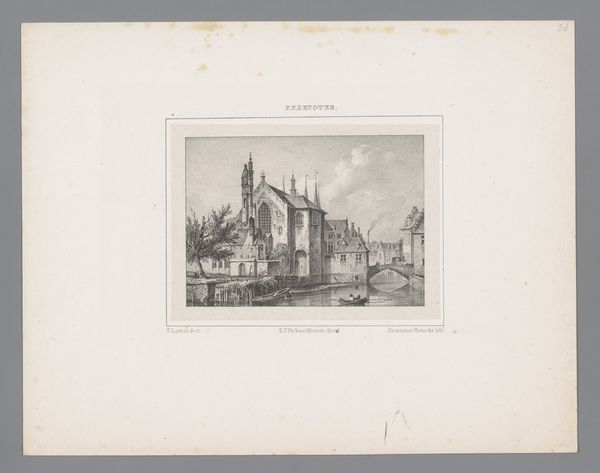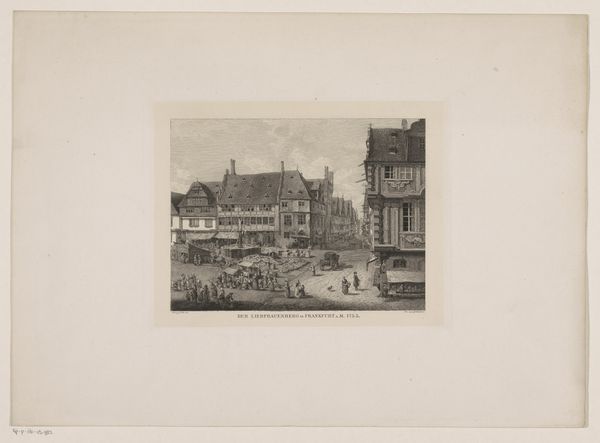
#
photo of handprinted image
#
pastel soft colours
#
natural tone
#
ink paper printed
#
light coloured
#
repetition of white
#
white palette
#
repetition of white colour
#
soft colour palette
#
watercolor
Dimensions: height 342 mm, width 250 mm
Copyright: Rijks Museum: Open Domain
Editor: So, this is "Straatleven bij een gracht," or "Street Life on a Canal," by Hermanus Johannes van den Hout, created sometime between 1823 and 1869. It’s an ink print on paper. I’m struck by how serene it feels, even though it depicts a busy urban scene. What do you see in this piece? Curator: Beyond the surface serenity, I see a carefully constructed tableau that speaks to the socio-economic divisions of the time. The architecture, the positioning of figures – they all tell a story. Note the figures on the steps, seemingly observing the figures by the water. What kind of labor or social performance are these lower figures enacting that necessitates upper class surveillance? Editor: That's a perspective I hadn't considered. I was mostly focused on the technical skill involved in creating such detail with ink. Are you suggesting that the artist is making a commentary on social hierarchy? Curator: I think it's impossible to separate art from its historical context. Van den Hout lived during a period of significant social and political upheaval. The rise of industrialization was dramatically reshaping cityscapes, and older forms of governance began eroding due to calls for representative democracy. Look closer – the stark contrast between the detailed architecture of the buildings in the back and the more loosely drawn, almost anonymous, figures in the foreground. Is there an elision here? Editor: So, perhaps the seeming serenity is a facade, concealing underlying social tensions and hierarchies? That's fascinating. Curator: Precisely! The 'serenity' might actually be a strategic artistic choice, designed to subtly critique or even mask the complex realities of urban life. Always look deeper into the intersectional narratives embedded within seemingly simple depictions. Editor: That gives me a lot to think about. I'll definitely look at art differently now, considering its broader context. Curator: That's the beauty of art history – it's a lens through which we can understand and challenge our understanding of society.
Comments
No comments
Be the first to comment and join the conversation on the ultimate creative platform.


